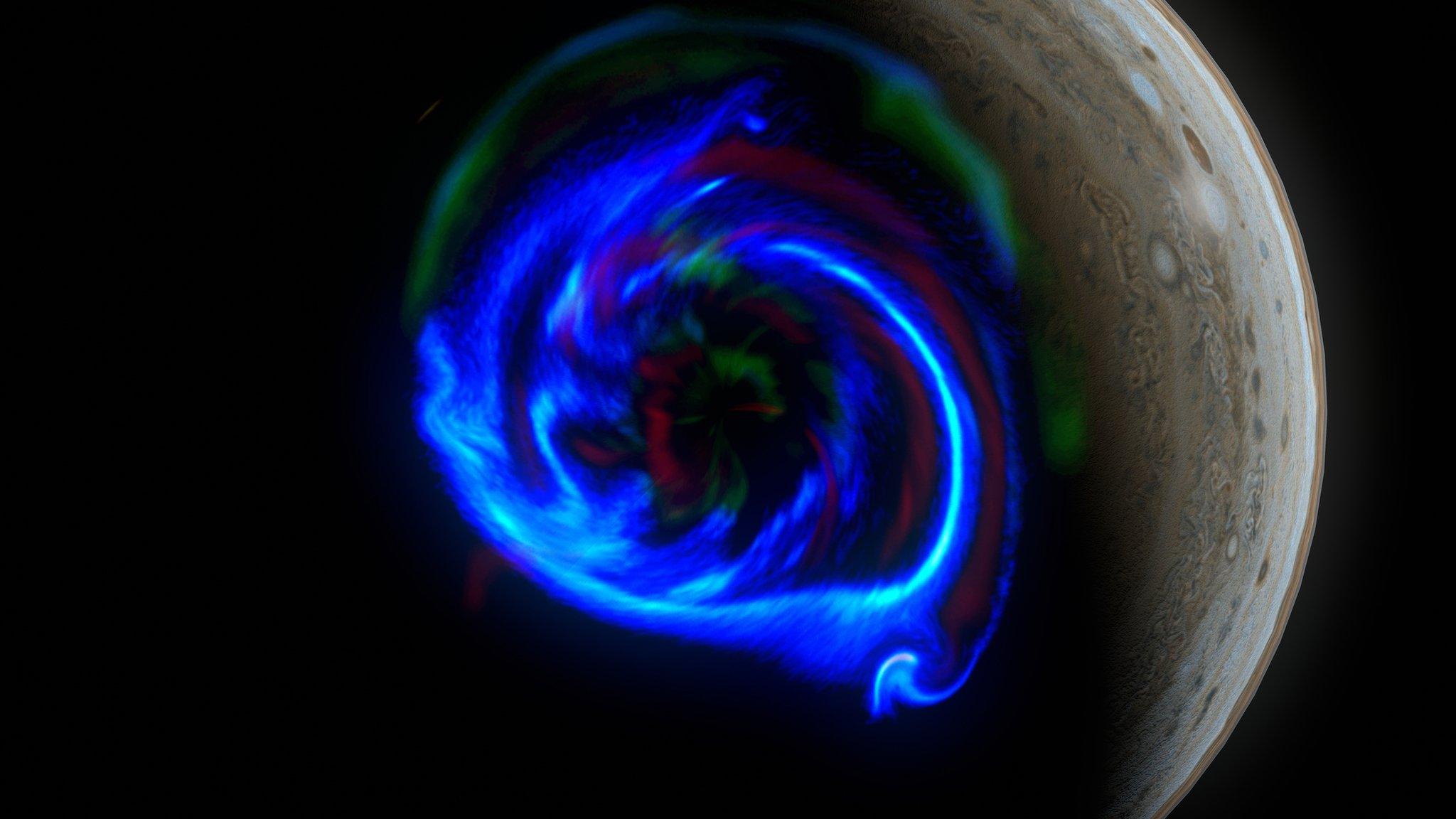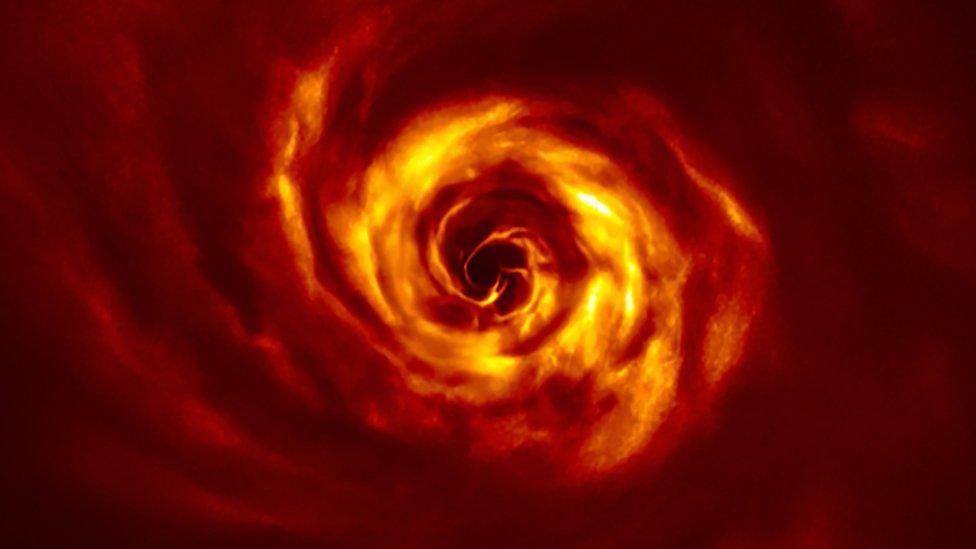Space: Supercomputer captures amazing images of dying star
- Published
- comments

The image shows what's known as a supernova remnant (SNR) - the traces of a dying star
An Australian supercomputer has captured amazing images of a dying star.
Using data from the Askap (Australian Square Kilometre Array Pathfinder) telescope array, scientists needed the help of a supercomputer to turn all the info into real pictures.
The data from Askap was transferred to the Pawsey Supercomputing Research Centre, located in Perth, Western Australia, for processing and converting into science-ready images.
There a new supercomputer called Setonix - named after the scientific name for one of Australia's favourite animals, the quokka aka Setonix brachyurus - produced the final pictures, including the traces of a dying star.
Askap, which consists of 36 dish antennas that work together as one telescope, is operated by Australia's national science agency, CSIRO.
The image shows a phenomenon known as a supernova remnant (SNR) which are the remains of powerful explosions from dying stars.
The star is estimated to be more than a million years old, and located 10,000 to 15,000 light-years away from us!
This supernova was captured by NASA's hubble space telescope in 2020!
The image will help scientists study the supernova in unprecedented detail.
This is the first of two installation stages for Setonix, with the second expected to be completed later this year.
This will allow researchers to process more of the vast amounts of data in a fraction of the time.
Researchers hope it will help them better understand our universe and enable them to uncover new objects hidden in space.
While the supercomputer is ramping up to full operations, so is the Askap telescope array, which will soon undertake even larger and deeper surveys of the sky.
The supernova remnant is just one of many features that's been revealed, and we can expect many more stunning images in the future.
- Published10 July 2021

- Published20 May 2020

